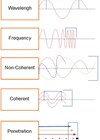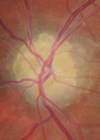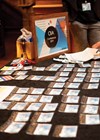Allied Professions archive for 2021
Neuro-ophthalmology: the extended role of an orthoptist
Neuro-ophthalmology has always been a speciality of interest during my studies and now in my career. In 2018, I started a Band 7 post which gave me an extended role in neuro-ophthalmology and the responsibility of developing an orthoptic led...
A comparison of light sources in retinal imaging
Before starting to talk about the light sources present in retinal imaging, it is necessary to start from the base: the light. Light is an electromagnetic wave whose smallest part is the photon (or quantum of light). A high frequency...
Imaging papilloedema vs. pseudo-papilloedema
Quite often, in the working week as an ophthalmic photographer, you will be given that patient with ‘swollen discs’ to image. These swollen discs could be a number of things, but mainly fall into one of two categories: papilloedema or...
The TOPCON / OIA Imaging Competition and a brief history of ophthalmic photography
We hope you like and appreciate the image forming the cover of the June/July 2021 edition of Eye News. The Ophthalmic Imaging Association (OIA) was honoured to have been invited to submit a series of images from the winners of...
The miracle of multi-professional working in modern-day eyecare
"It’s a Tuesday morning, and I’m in the presence of one of the most mind-boggling accomplishments in human history. This thing is so astounding in its complexity and scope, it makes the Panama Canal look like a third grader’s craft...
Getting one’s eye in
Lisette Bijma, Sister in the Eye Emergency Department at John Radcliffe Hospital, explains how COVID-19 provided a ‘baptism by fire’ and enabled fundamental and positive changes to the running of the department. Five years ago, I arrived in the UK,...








